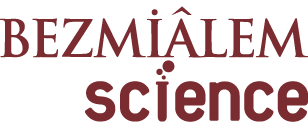ÖZET
Amaç:
Diş hekimlerinin zoonozlar konusundaki farkındalık düzeyini değerlendirmek ve aynı zamanda, veteriner hekimler, hekimler ve diğer sağlık profesyonelleri tarafından zoonotik hastalıklar ile mücadelede kesin sonuçlara ulaşmak için benimsenen anahtar bir politika olan “Tek Sağlık” kavramı hakkında araştırma yapmak ve farkındalıklarını artırmak.
Yöntemler:
Türkiye’de kamu, üniversite ve özel kliniklerde çalışan diş hekimlerine tanımlayıcı 18 soruluk anket Mart-Nisan 2020 tarihlerinde uygulanmıştır. Katılımcılara demografik bilgileri ve zoonotik hastalıklar konusundaki farkındalıklarını değerlendirecek sorular sorulmuştur.
Bulgular:
Toplamda 603 diş hekimliği uzmanı anket formunu doldurdu ve çalışmaya dahil edildi. Pedodonti, oral ve maksillofasiyal radyoloji ve restoratif diş hekimliği alanlarında uzmanlaşmış katılımcılar, uzman olmayanlara göre zoonotik hastalıklar hakkında önemli ölçüde daha yüksek bilgi düzeyine sahiptiler. Benzer şekilde, oral ve maksillofasiyal radyoloji konusunda uzmanlaşmış katılımcılar, ağız ve çene cerrahisi, ortodonti, protez diş hekimliği ve endodonti alanlarında uzmanlaşmış katılımcılara kıyasla zoonoz türleri hakkında önemli ölçüde daha yüksek bilgi düzeyine sahipti. Bununla birlikte, zoonoz türleri hakkında bilgi düzeyi açısından diğer uzmanlık alanları arasında önemli bir farklılık tespit edilmemiştir. Öte yandan, katılımcıların %96,19’u “Tek Sağlık” kavramı hakkında hiçbir bilgisi olmadığını belirtmiştir.
Sonuç:
Diş hekimleri ve diğer tüm sağlık çalışanlarının zoonoz hastalıklar konusunda bilgilendirilmesine ve bu konu hakkında yapılacak çalışmalara ihtiyaç duyulmaktadır. Ayrıca özellikle zoonoz hastalıklar konusunda “Tek Sağlık” konseptinin benimsenmesi gerekmektedir.



